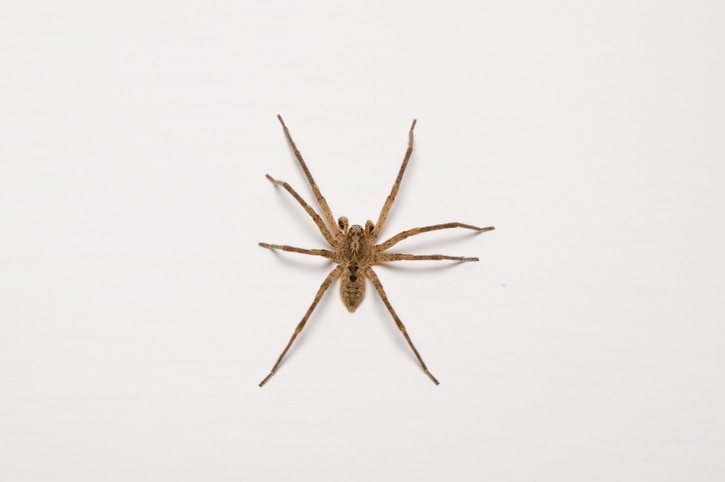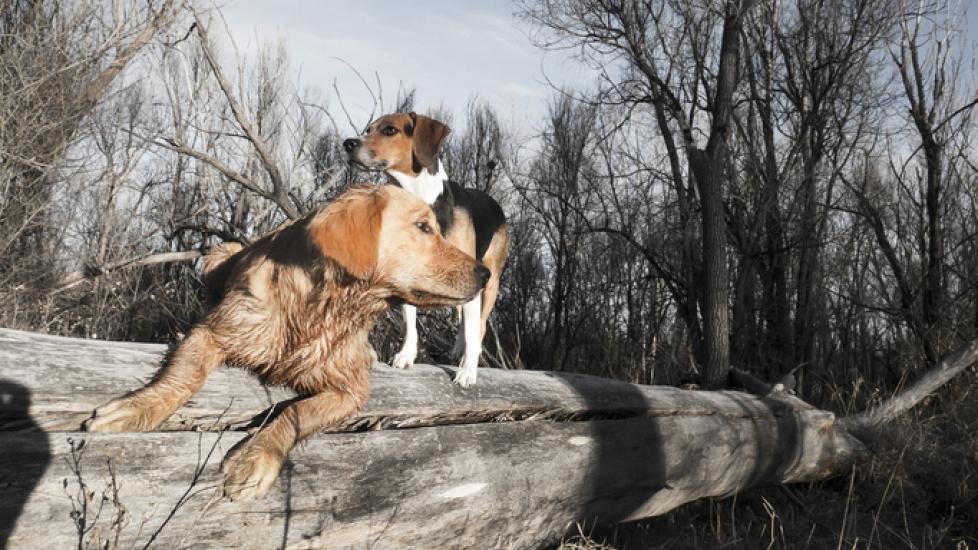Brown Recluse Spider Bite Poisoning in Dogs
What Is Brown Recluse Spider Bite Poisoning in Dogs?
The brown recluse spider is notorious around the world for being highly venomous. A brown recluse is one of three spiders in North America (along with the black widow and Chilean recluse spider) whose bite is considered a medical emergency for any species, including dogs, cats, and humans.
The brown recluse spider inhabits a large area of the U.S. and can be found throughout the Midwest and South, reaching from Louisiana along the Mississippi River into Northern Illinois. Brown recluse spiders can be found as far east as Tennessee and parts of Georgia.
The classic violin shape on the brown recluse’s back can be an easy identifier. If you suspect your dog has been bitten by a brown recluse, they must be taken to their veterinarian or an emergency veterinarian as soon as possible.
Symptoms of Brown Recluse Spider Bite Poisoning in Dogs
Brown recluse spider bites are often not painful initially. Your dog may show no clinical signs at first or show non-specific signs such as limping or shaking. The venom released from the spider when it bites causes the skin and surrounding tissues to become necrotic (dead) by releasing several enzymes.
The bite may first develop as a small area of redness or itchiness. Within 2-8 hours after the bite, a blister or ulcer develops that will turn into the classic bull’s-eye lesion associated with brown recluse spider bites. The center of the bite may be white or even purple from lack of oxygen to the tissue. Over time, it will become dark black, the tissue will die (process of necrosis), and the surrounding skin will turn red. It’s common for deeper layers of the skin and the underlying muscle tissue to be affected as well.
Anemia often develops within 24 hours of a brown recluse bite, which commonly presents as hematuria (blood in the urine). Serious complications occur when the ulcer progresses to necrosis or when the venom enters the bloodstream and is carried to internal organs.
Dogs bitten by brown recluse spiders can have clinical signs other than the skin wounds that take a few days to develop, such as:
-
Fever
-
Weakness
-
Bleeding disorders (bruising, abnormal clotting, etc.)
-
Liver and kidney damage (yellowing of the skin, unsteady gait, increased thirst, and anorexia)
If you notice any suspicious skin lesions or your dog is not acting like themself, they should be examined by a veterinarian as soon as possible—especially if you live in an area where brown recluse spiders live or if you’ve seen venomous spiders in your area before.
Causes of Brown Recluse Spider Bite Poisoning in Dogs
Brown recluse spiders are usually found in dark, warm places. Though they’re a danger to you and your pet, these spiders will try to avoid humans and dogs. They build irregularly shaped webs under logs or rocks, out of the way of other animals. If they come inside, brown recluse spiders make webs in a closet or a cardboard box where they won’t be disturbed—this is where they get their name “recluse.”
But brown recluse spiders will bite if they feel cornered or entrapped (for example, if the spider is accidentally laid on, stepped on, or crushed). While dogs can be bitten by a brown recluse anywhere on their body, they are commonly bitten on the legs.
What Does a Brown Recluse Spider Look Like?

The brown recluse spider is commonly known as a fiddle-back or violin spider because of the violin-shaped markings on its back, with the neck of the violin pointing away from the head. The spider’s body is a lighter brown than the darker violin marking on the back, immediately behind the eyes. These markings develop as the spider grows and might not be present in young brown recluses.
A more definitive way to figure out if a spider is a brown recluse would be looking at its eye pattern of six eyes in pairs with a space separating each pair. Most other spiders have eight eyes in two rows of four.
A brown recluse spider also has long (20-30mm) light brown legs with no stripes or bands, and its body is no longer than half an inch. Brown recluse spiders are usually between 6-20mm but may grow larger. Male brown recluse spiders are less venomous and smaller than the females.
How Veterinarians Diagnose Brown Recluse Spider Bites in Dogs
It’s important to provide your vet with a detailed history of your dog’s health and their symptoms. A brown recluse spider bite can be diagnosed by identifying the spider itself (if you’re able to snap a photo or kill it and get it into a jar without touching it) or by its characteristic bull’s-eye skin lesion. Your veterinarian will perform bloodwork and a urinalysis to look for anemia, coagulation or clotting issues, and blood in the urine.
Treatment of Brown Recluse Spider Bite Poisoning in Dogs
Unfortunately, there is no antivenom for brown recluse spider bites. Treatment is therefore symptomatic and supportive.
Wounds are treated with regular cleaning, cold compresses, and bandages. Antibiotics and pain medication are often needed because of the significant skin wound produced by a brown recluse spider bite. There is a special medication, Dapsone, that can be given to reduce the extent of necrosis within the bite wound, but the case must be diagnosed early to use it.
In severe cases, surgical treatment might be necessary to clean the wound and remove the dead tissue present, but it’s not often recommended because it can lead to a nonhealing wound and permanent scarring is possible. Other treatments include hospitalization, blood transfusions, and supportive care for organ damage and bleeding disorders.
Recovery and Management of Brown Recluse Spider Bite Poisoning in Dogs
Healing time for brown recluse spider bites is highly variable and can take 1-8 weeks to heal. Your veterinarian will want to see your dog often, usually weekly, to assess the wound and change the bandage until everything’s healed. During this time, it’s recommended that you keep an Elizabethan collar (cone) on your dog so they cannot disturb the wound or remove the bandage. Systemic complications or death are very rare in brown recluse spider bites.
Preventing Brown Recluse Spider Bite Poisoning
If you are concerned about venomous spiders in or around your home, you may want to take the following precautions:
-
Limit your dog’s access to attics, basements, closets, and other warm, dark areas inside the home.
-
Keep your dog away from woodpiles, debris, and clutter outside.
-
Seal cracks and holes in your home’s exterior that would allow pests to come inside.
-
Use a pet-friendly spider repellant.
-
Hire a professional, pet-friendly spider exterminator.
If you live in an area where brown recluse spiders are found and you notice clinical signs of a brown recluse spider bite on your dog, contact your vet immediately to get the care your dog needs.
Health Tools
Not sure whether to see a vet?
References
Illinois Department of Public Health. Brown Recluse and Black Widow Spiders.
Featured Image: iStock/Daniel Gaura
